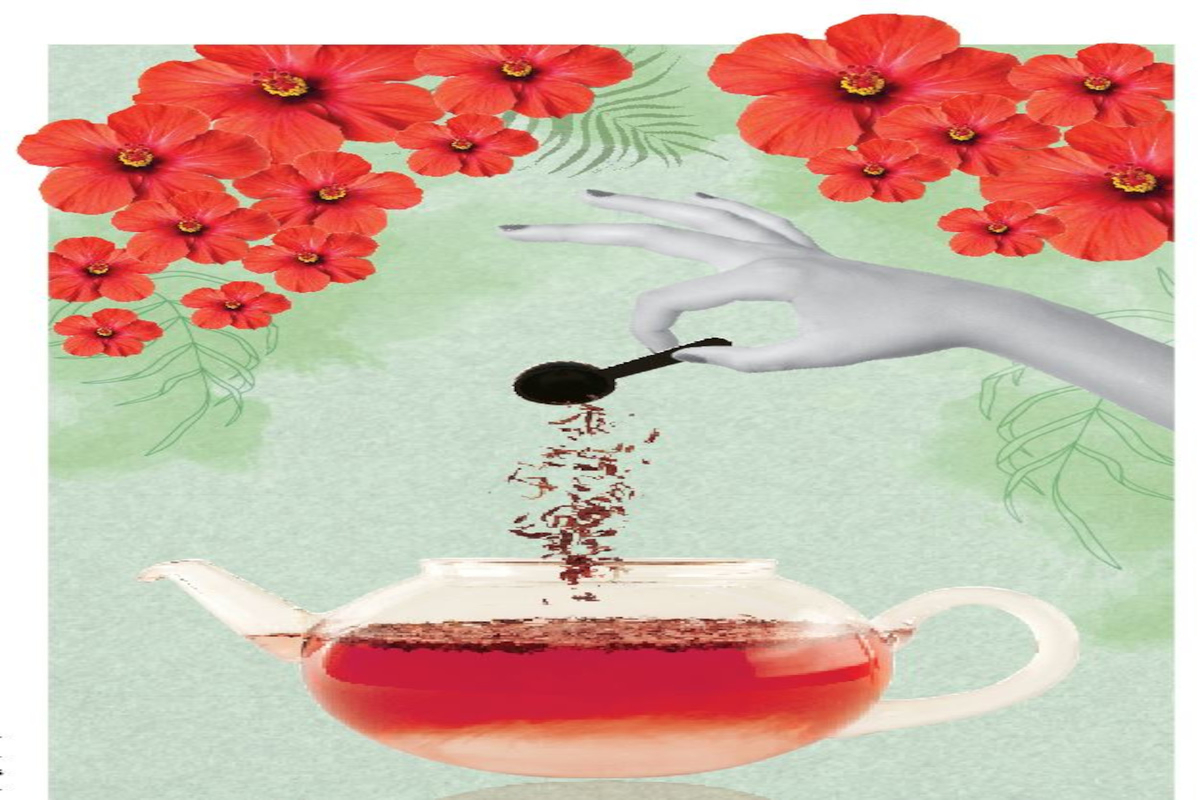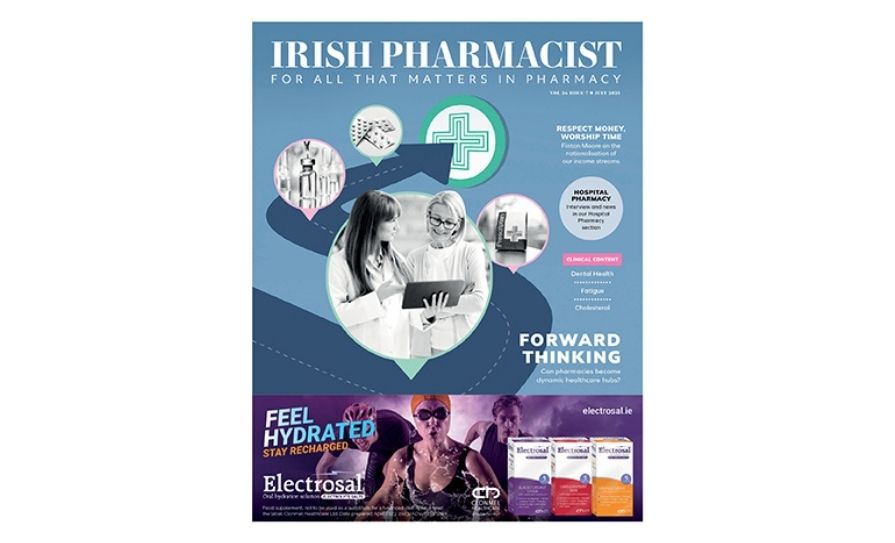Dr Des Corrigan puts the kettle on and looks at the properties of a variety of teas
A relatively trivial if upsetting consequence of “The Thing”, as Ryan Tubridy refers to Coronavirus, was the cancellation of our much-anticipated trip to visit the Australian branch of the family. I hope that circumstances will allow us travel in the not-too-distant future, especially since their experience of the pandemic has been, so far, very different to ours. It is with some disbelief that I listen to mention of trips to pubs, restaurants and beaches.
These are of course among the things that I enjoy most about Perth, apart from spending time with family. In addition, I am looking forward to reacquainting myself with the diversity of Western Australia’s flora, given that I am such a plant nerd. I am looking forward to the visual and sensory treat provided by such native species as the
Eucalyptus or gum trees, wattles, bottle brushes and tea trees, alongside the array of other tropical and subtropical gems including bougainvillea, oleanders, jacarandas and above all, exotic hibiscus flowers.
Hibiscus, of course, grows in many other countries and the species with which I am most familiar is H.rosa-sinensis, best known for its beautiful flowers. A related species (H.sabdariffa) is more important economically as one variety is cultivated for its fibres, used instead of jute. A second variety is grown for its swollen red calyces or flower sepals that are used to make herbal teas and other beverages in many countries. What attracts drinkers is the red colour, tart flavour (it has been called ‘sour tea’) and its high content of vitamin C. The tart taste is due to the presence of citric, hydroxycitric, malic and tartaric acids. The hydroxycitric acid (HCA) is a different diastereoisomer to that found in garcinia, which has attracted notoriety for its slimming effects. The red colour is due to a mixture of anthocyanins, well known for their antioxidant activity.
Assuming the rooibos is not contaminated with liver-damaging pyrrolizidine alkaloids, as has been reported in some instances, then it is not going to do any harm
Extracts of hibiscus have been shown to have antibacterial, neuroprotective, hepatoprotective, diuretic, hypocholesterolaemic, antidiabetic and hypotensive effects in animal studies and in some small-scale clinical trials. Other activities include immunostimulation resulting in increased IL-10 and decreased TNF-a and a study in 10 healthy volunteers showed anti-inflammatory activity. A systematic review and meta-analysis published in the Journal of Ethnopharmacology in 2013 noting that Hibiscus is promoted for reducing cholesterol levels evaluated six studies involving 474 subjects. The review concluded that there was no significant effect on total, HDL or LDL cholesterol or on triglyceride levels. Another systematic review and meta-analysis of RCTs of hibiscus in arterial hypertension appeared in the Journal of Hypertension in 2015. It included five RCTs involving 225 patients administered hibiscus extracts and 165 controls. Although the meta-analysis showed that hibiscus resulted in a significant lowering of both systolic and diastolic pressure, the authors played safe as usual by calling for more research.
A 2016 paper in the Journal of Dietary Supplements looked at the effects of green tea and sour tea supplementation on oxidative stress and muscle damage in 54 male soccer players divided into three groups that were given either green tea extract, hibiscus tea extract or maltodextrin as a control. After six weeks, there was no effect on muscle damage indices such as creatine kinase or lactate dehydrogenase but both groups of athletes given the tea extracts had significantly decreased oxidative stress levels compared to those who had
taken the placebo.
The efficacy of sour tea on some cardiovascular disease risk factors was examined in a Phytotherapy Research paper published earlier this year. This was a systematic review and meta-analysis of seven RCTs involving 362 participants. The review found that Hibiscus sabdariffa tea consumption significantly reduced fasting plasma glucose, systolic and diastolic BP but confirmed the lack of effect on triglyceride and cholesterol levels.
Another red tea is rooibos, a plant indigenous to the Western Cape province of South Africa. There are actually two teas prepared from the leaves and stems of Aspalathus linearis. The traditional Rooibos that is sold here is red, due to the method of preparing the herb that involves bruising the plant and subjecting it to a fermentation. The second tea is green in colour because fermentation is prevented by rapid drying after harvesting, in order to avoid any oxidation. Unfermented material contains more of a characteristic chalcone called, inevitably, aspalathin. Chalcones are largely absent from the fermented red variety that contains a complex mix of phenolics instead. The unique selling point of red rooibos appears to be its total lack of caffeine and low level of tannins.
Pharmacological studies have reported hepatoprotective, antitumour and antiviral (influenza) activities. Notable antioxidant effects were reported in human studies in, for example, atopic individuals where extracts of both types inhibited basophil activation in a dose-dependent manner after the volunteers were exposed to allergens such as grass pollen. A Swedish study of the effects of green, black or rooibos teas on angiotensin-converting enzyme (ACE) and nitric oxide (NO) in healthy volunteers was published in 2010 by Public Health Nutrition.
In the study, 17 individuals were given a single oral dose of 400ml of each tea in a randomised, three-phase crossover study. ACE activity and NO levels were measured at 0, 30, 60 and 180 minutes after each tea. Oral intake of rooibos significantly inhibited ACE activity after 30 and 60 minutes as measured by enzyme assay and by ACEII genotyping. There was no significant effect on NO levels. The authors concluded that rooibos and green tea might have cardiovascular effects.
The Journal of Ethnopharmacology in 2010 included a paper describing a study involving 40 volunteers with risk factors for cardiovascular disease who drank six cups of rooibos tea daily for six weeks. Significant decreases in lipid peroxidation markers were reported, along with significant decreases in serum LDL–cholesterol and triacylglycerols and a significant increase in HDL-cholesterol.
I find it remarkable that there are few, if any, up-to-date clinical studies. Assuming the rooibos is not contaminated with liver-damaging pyrrolizidine alkaloids, as has been reported in some instances, then it is not going to do any harm.
How much benefit you are likely to get from consuming it, or indeed hibiscus, is still hard to know. Personally, I will stick to my black tea from India, Burundi, Kenya or wherever.








